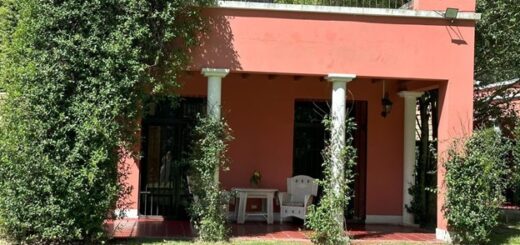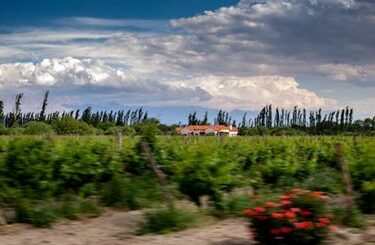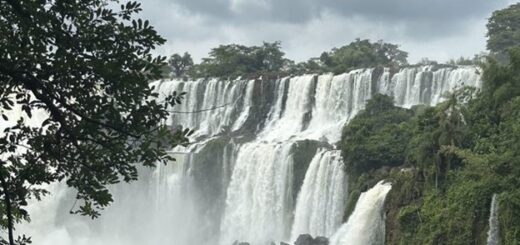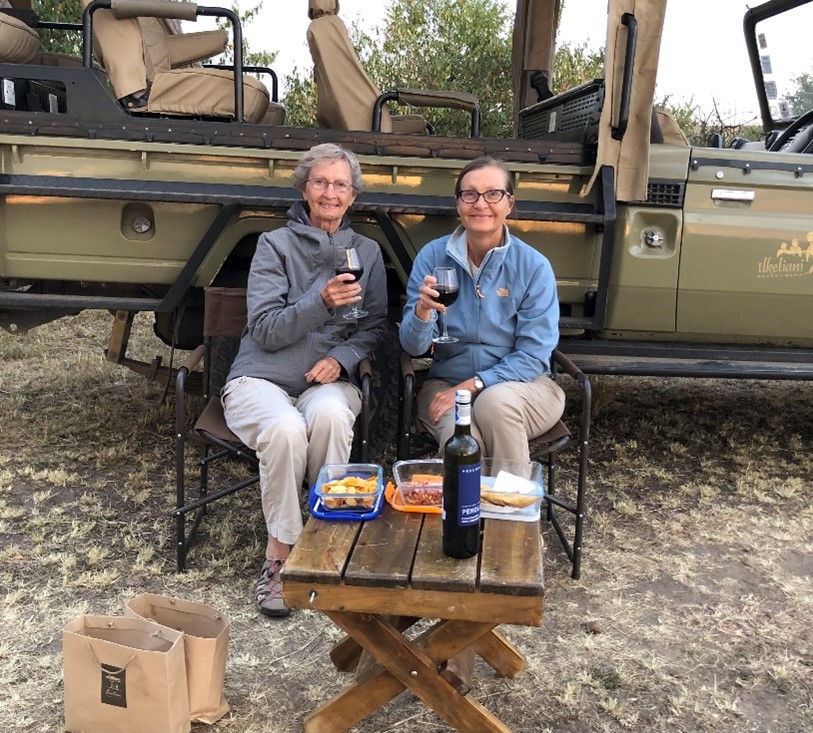Purmamarca and Humahuaca
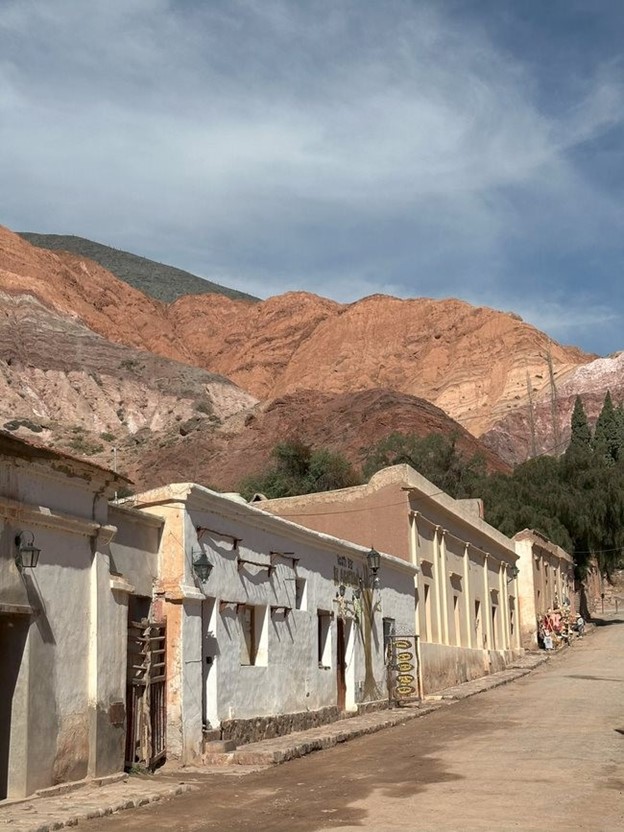
Travel Advice for Seniors: Purmamarca and Humahuaca
Sometimes, it’s just nice to get out of the city! This was one of those days. We started our drive taking the backroads past some of the extensive cattle ranches or estancias in northern Argentina’s Salta region. We saw a few authentic gauchos doing their day’s work dressed in light clothes with large chaps to avoid the brush. We drove past a 400-year-old estancia, El Bordo de las Lanzas. Our guide talked us through the entire cattle production cycle and history of cattle ranching in the area, helping us understand why Salta is arguably known as the “Capital of Beef”.
Cattle country soon gave way to the red rocky ground and mountains of the Andes. It was about a two-hour drive to our first stop at Purmamarca. This village is set at the base of Seven Color Hills, aptly named for their striped effect of different colors from red to white and back to red again. The colors were formed from ancient mineral sediment that has been raised up for viewing by shifting of the tectonic plate.
Purmamarca was originally part of the Inca Road in the 1500s. Presently the picturesque village is home to plenty of local artisans, who display their wares on the 9 de Julio Square.
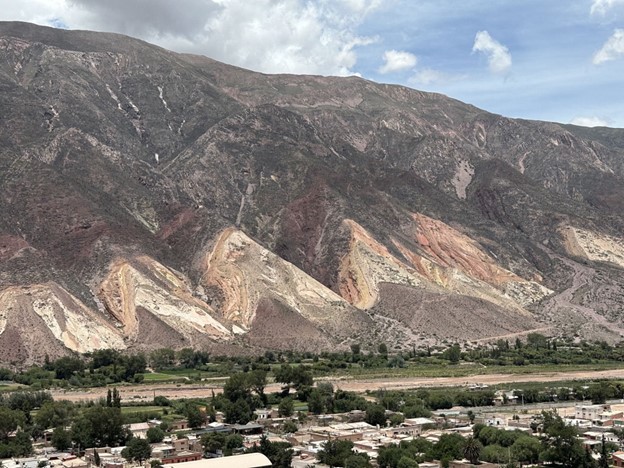
If you’re of a mind, the Paseo de los Colorados trail will provide you with a hike to see views of the mountains. And the centuries-old Santa Rosa de Lima church, which dates back to the 17th century, is a cool respite. Most of the buildings in the village are made of adobe and are simple in design, making for a relaxing shopping stop and a nice place to stroll around and take some great photos!
Our lunch empanada stop was at Tilcara. Just outside town are the partially rebuilt remains of the Pucará de Tilcara, which is a pre-Incan fortress, strategically chosen for its views of the trail. We ended up walking around the cactus garden and skipped the substantial hike up the mountain as it was a hot day, and the hike was a long ramp uphill.
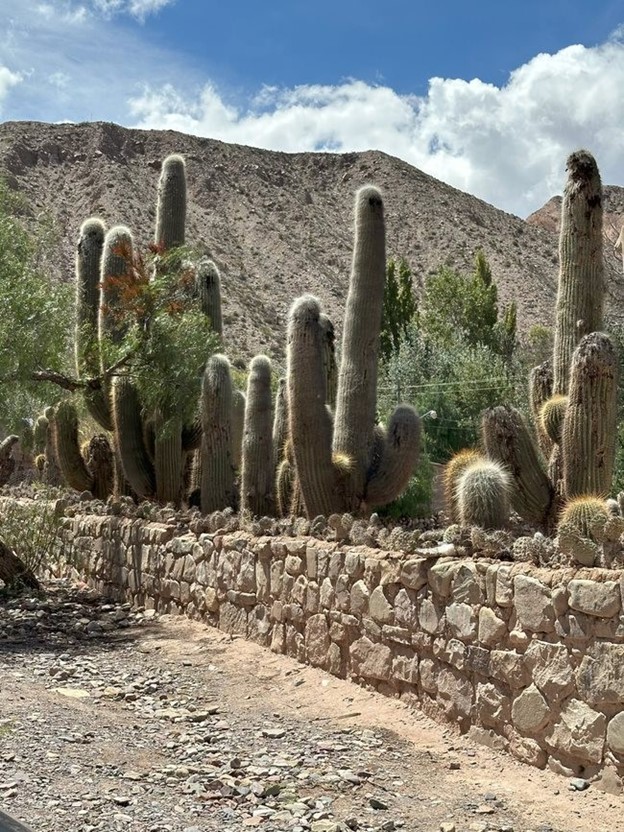
Our next stop, Quebrada de Humahuacca is a UNESCO site that follows the route of the Camino Inca, or Inca Trail.
The Inca Trail was built in the 1400s and was a main route for the Inca Empire, from its source in the high desert of the Andes to the Rio Leone, some 100 miles to the south. The trail is made of stone pathways and includes travel through mountains, alpine tundra and jungles. There are numerous archeological sites along the way including temples and observatories. Some areas have very steep climbs and descents. Note that the trail also has parts that are high altitude, for which high altitude pills may be necessary. Not so for our visit to Humahuacca though!
So much history here. There is evidence that this trail was used as a major route over the last 10,000 years, from prehistoric times to the Incan empire (15th to 16th centuries) to the fight for independence in the 19th and 20th centuries.
For this day trip, wear comfortable shoes and make sure to bring plenty of water, a hat and sunscreen. Plan on taking time out for a cold drink and some shade, it gets hot in some of these areas. Also, if you have mobility issues, bring a couple of walking sticks. It’s not very accessible here and the pathways are uneven and usually dirt or rock.
The mountains and valleys are truly beautiful in this region and made for a great drive with several scenic stops. The private tour took about 10 hours, so plan to spend a very full day, unless you are traveling one way.
Where we stayed: Legado Mitico Salta. Very nice hotel, breakfast included. Centrally located.Accessible entrance, common areas and rooms.
How we got there: Day trip out of Salta. This was part of an 18-day private tour through Brazil and Argentina.
General Accessibility Information: See notes above. Most of these sights were not largely accessible. The walkways were uneven and without ramps and the mountainous terrain around the villages did not lend itself to accessibility. Call in advance to verify and make specialty arrangements. See our sections on specialty apps and accessible travel for more on accessibility assistance.

